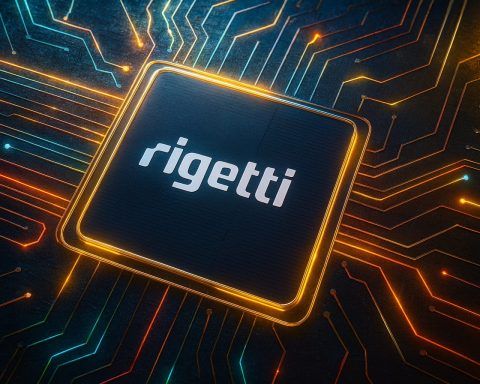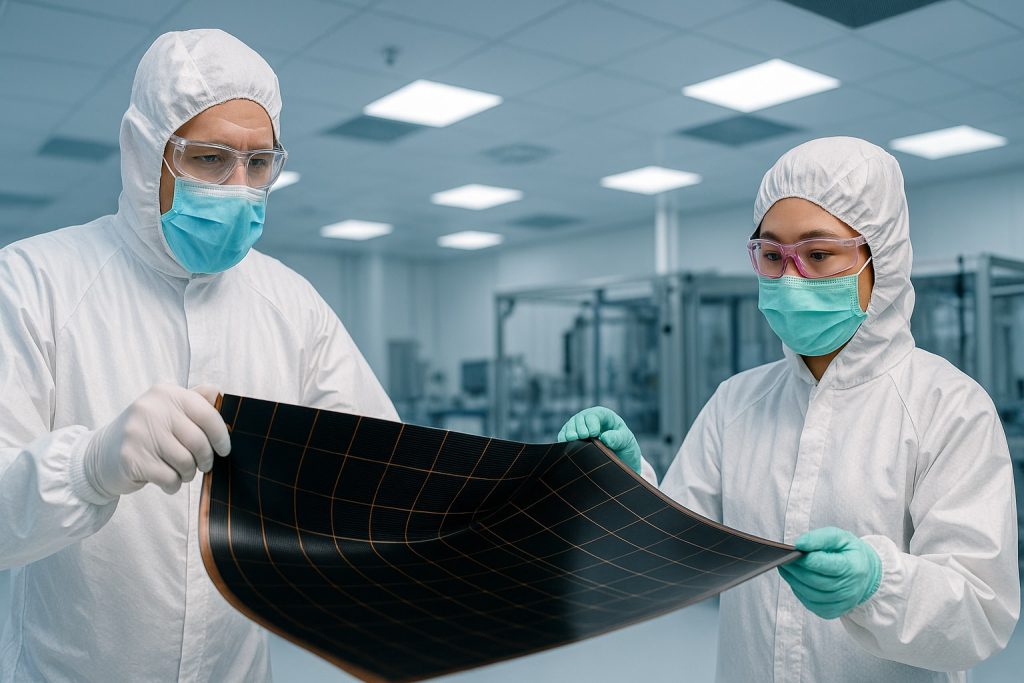- In 2025, researchers unveiled the first topological quantum processor, an 8-qubit device using Majorana particles.
- D-Wave’s Advantage quantum annealing computer solved a complex magnetic simulation in minutes, a problem that would take classical supercomputers millions of years.
- In late 2024 Google debuted the 105-qubit Willow superconducting chip with unprecedented error-correction performance.
- IBM crossed the 1,000-qubit milestone with its Condor processor.
- IonQ surpassed 99.9% two-qubit fidelity on a prototype trapped-ion system.
- PsiQuantum announced ultra-low-loss photonic chips and detectors in 2025 and aims for a million-qubit fault-tolerant photonic computer in the second half of the 2020s.
- D-Wave is upgrading to a 7,000-qubit annealer and is developing a small gate-model processor.
- Alibaba’s Quantum Lab shut down in late 2023, Baidu exited its quantum efforts in early 2024, while China continues to invest massively in quantum computing and communication, including the Micius satellite and a national QKD fiber network.
- A grocery chain used a D-Wave quantum solution to optimize delivery schedules, achieving an 80% reduction in computation time.
- The United Nations designated 2025 as the International Year of Quantum Science and Technology.
Major News and Breakthroughs in 2025
2025 has been a milestone year for quantum computing, marked by record-breaking experiments and technological firsts. Researchers unveiled the first topological quantum processor – an 8-qubit device using exotic Majorana particles for inherently stable qubits [1] [2]. In another leap, D-Wave’s annealing computer solved a complex magnetic simulation in minutes – a task so complex it would take a classical supercomputer essentially millions of years [3]. “Our achievement shows we can solve problems beyond the reach of the world’s most powerful supercomputers,” said D-Wave CEO Alan Baratz of this result [4]. Late 2024 set the stage for these advances: Google debuted its 105-qubit “Willow” superconducting chip with unprecedented error-correction performance [5], and IBM crossed the 1,000-qubit milestone with its Condor processor [6]. Such achievements reflect what one report calls a shift “from development to deployment”, as quantum hardware becomes more powerful and reliable [7].
Quantum Computing Technologies and Approaches
Multiple quantum technologies are progressing in parallel. The leading approach, superconducting qubits (IBM, Google, etc.), has already scaled into the hundreds of qubits on a single chip. Trapped-ion qubits (IonQ, Quantinuum) offer the highest gate fidelities – IonQ recently surpassed 99.9% two-qubit fidelity on a prototype system [8] – though operations are slower. Quantum annealing (pioneered by D-Wave) uses thousands of qubits for optimization problems; D-Wave’s Advantage machine with 5,000+ qubits has shown a clear speedup for certain tasks [9]. Photonic quantum computers (PsiQuantum, Xanadu) encode qubits in photons traveling through optical circuits; a 2025 breakthrough achieved ultra-low-loss photonic chips, a key step for scaling up optical qubits [10]. Other approaches, like neutral atoms (Pasqal, QuEra) and topological qubits(Microsoft’s focus), are also making progress. This “quantum zoo” of technologies [11] indicates a healthy, multi-pronged drive toward the same goal: more qubits with less error.
Key Players in the Quantum Computing Industry
- IBM: IBM has built some of the largest quantum processors (127 qubits in 2021, 433 in 2022, and 1,121 qubits by late 2023) and offers them via its IBM Quantum cloud. It plans a modular system exceeding 4,000 qubits by 2025 [12]. IBM leads in quantum patents and is focused on practical uses in chemistry, finance, and AI [13].
- Google: Google’s Quantum AI lab demonstrated quantum supremacy in 2019 and is targeting a useful error-corrected quantum computer by 2029 [14]. Its 105-qubit Willow chip (2024) achieved record error suppression via quantum error correction techniques [15]. Google continues to invest heavily in quantum research and integration with its classical computing infrastructure.
- Microsoft: Microsoft is pursuing topological qubits as a potential shortcut to stable quantum computing. In 2025 its researchers unveiled an 8-qubit topological processor – a step toward hardware-protected qubits [16]. Through Azure Quantum, Microsoft also provides cloud access to various quantum hardware. It is part of U.S. government efforts (like a DARPA program) and aims to build a full-scale quantum machine within a few years [17].
- IonQ: IonQ is a leader in trapped-ion quantum computing, known for high-fidelity qubits. It is expanding capacity with modular ion-trap systems and aims for broad quantum advantage by mid-decade [18]. IonQ’s roadmap includes integrating new technologies (e.g. acquiring Oxford Ionics for photonic interconnects) to scale up [19], and the company has demonstrated quantum chemistry and machine-learning applications on its hardware.
- Rigetti: Rigetti Computing develops superconducting qubit processors and operates its own quantum cloud service. It has demonstrated 80+ qubit chips with >99% two-qubit gate fidelity [20] and is working on multi-chip architectures to scale beyond 100 qubits [21]. Rigetti targets near-term applications (like quantum machine learning for optimization) even as it pursues larger, more error-corrected processors.
- PsiQuantum: PsiQuantum is building a photonic quantum computer using silicon photonics. In 2025, it announced a new photonic chipset and demonstrated ultra-low-loss waveguides and detectors – solving key scaling challenges for optical qubits [22]. Heavily funded, PsiQuantum’s goal is to reach a million-qubit, fault-tolerant photonic quantum computer in the second half of the 2020s, leveraging existing semiconductor manufacturing.
- D-Wave: D-Wave specializes in quantum annealing systems for optimization. Its Advantage quantum annealers (with over 5,000 qubits) are used by clients for tasks like scheduling and machine learning. In 2023, D-Wave showed its annealer could solve a problem in minutes that would take classical supercomputers on the order of millions of years [23]. This result – essentially a quantum advantage in simulation – underscores D-Wave’s practical value. The company is now upgrading to a 7,000-qubit annealer and also developing a small gate-model processor.
- Alibaba (China): Alibaba was a prominent player via its Alibaba Quantum Lab, but in late 2023 it shut down its quantum computing effort and donated the lab to a university [24]. (Baidu made a similar move in early 2024 [25].) This reflects how China’s quantum initiatives are now mostly driven by government and academia rather than big tech firms [26]. China continues to invest massively in quantum computing and communication – achieving record-setting photonic and superconducting experiments – even though Alibaba itself has exited the field.
Sectoral Applications and Use Cases
Quantum computing is beginning to show real use cases across industries:
- Finance: Banks and financial firms are testing quantum algorithms for portfolio optimization, trading strategies, and risk analysis. Quantum computers can consider far more scenarios in complex models than classical machines. For example, prototypical quantum algorithms have been used to speed up option pricing and optimize asset portfolios. While these are still early experiments, finance is expected to be among the first industries to gain value from quantum computing (e.g. in faster derivative pricing or more efficient capital allocation) [27].
- Cybersecurity: To counter future quantum code-breaking, organizations are deploying post-quantum cryptography (PQC) and exploring quantum key distribution. Governments and tech companies have begun adopting PQC algorithms (standardized by NIST) so that even if a large quantum computer emerges, encrypted data remains safe [28]. At the same time, quantum random number generators and QKD networks are being tested to enhance security – for instance, a 2025 test transmitted data over a 600+ km quantum-encrypted fiber link in the UK. Cybersecurity strategies now include this quantum-safe transition as a top priority.
- Logistics: Quantum optimization can improve complex logistics and supply chain decisions. Quantum annealers and hybrid algorithms have been applied to vehicle routing, scheduling, and warehouse optimization. In one example, a grocery chain used a D-Wave quantum solution to optimize delivery schedules and saw an 80% reduction in computation time for scheduling [29]. Airlines and shipping companies are similarly experimenting with quantum approaches to tackle routing problems that are computationally very hard. As quantum hardware grows, it could find more efficient solutions for supply networks and transportation routes, reducing costs and saving time.
- Pharmaceuticals & Chemistry: Quantum computers can simulate molecular structures and reactions that are intractable for classical computers, potentially accelerating drug discovery and materials science. In 2024, IonQ and AstraZeneca demonstrated a quantum-assisted chemistry simulation for a drug discovery process, achieving a 20× speedup in a key step [30]. Pharmaceutical giants are partnering with quantum startups to study problems like protein folding and drug-target interactions using quantum algorithms. In chemistry, quantum simulation has been used (on small scales) to examine new battery materials and catalysts. Many experts predict that chemistry will be the first field where quantum computers outpace classical ones, unlocking breakthroughs in medicine and materials [31].
- Energy: The energy sector stands to benefit from quantum computing in optimizing grids and innovating new energy technologies. Utility companies are testing quantum algorithms to better balance power grids as they incorporate renewable sources (a complex optimization problem). Quantum simulations also help in designing advanced materials for energy – for example, automotive companies used quantum computers to improve hydrogen fuel cell catalysts and lithium battery chemistry [32]. These early efforts suggest quantum computing could play a role in creating more efficient batteries, solar cells, and industrial catalysts. In addition, long-term projects are looking at using quantum computers for climate modeling and to enhance the development of fusion energy. While much of this is exploratory, the energy industry views quantum technology as a potential key for a more sustainable future.
Government and Global Initiatives
Governments worldwide consider quantum technology a strategic priority and have escalated investments:
- United States: U.S. federal funding for quantum R&D has surged (over $1 billion+ in 2024 alone [33]) through programs like the National Quantum Initiative. Multiple national labs and university centers are devoted to quantum research, often in partnership with companies. The U.S. also coordinates internationally (e.g. agreements with EU and Japan) to stay at the forefront. This public support, combined with America’s startup ecosystem, keeps the U.S. at the cutting edge of quantum computing innovation.
- Europe: The EU launched a €1 billion Quantum Flagship and European countries are investing heavily as well. Germany and France have multi-billion euro quantum programs, and the UK committed £2.5 billion for the next decade [34]. European efforts emphasize collaboration: cross-border projects connect leading universities and companies (e.g. in the Netherlands, Austria, and Finland) to build quantum hardware and a quantum internet. As a result, Europe has a strong base of quantum talent and startups supported by public funding.
- China: China has made quantum a national priority, reportedly spending billions on quantum computing and related tech. Chinese teams have achieved world-leading results (such as photonic quantum advantage demonstrations [35]) and China leads in quantum communications (with the Micius satellite and a national QKD fiber network). In 2023, Chinese tech giants Alibaba and Baidu exited their own quantum projects [36] [37], indicating the government’s dominant role in R&D via state labs and universities [38]. China’s ongoing investments – building new labs and training thousands of quantum scientists – ensure it remains a formidable player in the global quantum race.
- Other Regions: Japan has a strong quantum program (Toshiba and other firms lead in quantum cryptography, and Japan is developing its own superconducting quantum computer). Canada has long supported quantum innovation (home to D-Wave and many quantum software startups). Australia, India, Russia, and others have national initiatives to develop quantum expertise and infrastructure. This worldwide engagement means quantum research is truly global, with both competition and collaboration driving progress. Fittingly, the United Nations designated 2025 as the International Year of Quantum Science and Technology [39], reflecting the broad importance and international nature of this field.
Outlook: Challenges and Roadmaps Ahead
Significant challenges remain on the path to large-scale quantum computing. The foremost issue is error correction: today’s qubits are highly error-prone and lose coherence quickly. Reaching fault-tolerance will require implementing quantum error-correcting codes that use many physical qubits to create one reliable logical qubit. This demands qubit counts in the thousands (or more) and error rates far below current levels. Steady progress is being made – for instance, researchers have shown that bigger quantum error-correcting codes can suppress error rates [40] – but truly error-corrected, long computations are not yet possible.
Another challenge is scalability. Controlling and connecting qubits becomes exponentially more complex as systems grow. Engineers are exploring modular architectures (linking multiple smaller processors) and new technologies for interconnects and cryogenics to scale from the current ~100-qubit devices to thousand- or million-qubit devices. Despite these technical mountains, quantum hardware is improving each year – qubit counts are climbing and error rates trending down.
Industry roadmaps reflect both the challenges and optimism. Many leading players predict achieving a fault-tolerant quantum computer by the early 2030s (for example, Quantinuum’s goal is by 2030) [41] [42]. Before then, they aim to demonstrate useful “quantum advantage” on specific problems, possibly within the next few years. If current trends hold, by the end of this decade we may have quantum machines routinely solving problems impractical for any classical supercomputer. As one group of experts put it, “the quantum train is leaving the station” [43] – organizations that invest in quantum readiness now are positioning themselves to reap the benefits when quantum computing reaches maturity. The progress of 2025, with historic firsts and faster-than-expected innovation, suggests that moment is drawing ever closer.
Sources: Quantum Technology Monitor 2025 (McKinsey) [44] [45] [46]; UCSB/Microsoft topological qubit news [47] [48]; Google AI Blog [49]; D-Wave announcement and Science paper [50] [51]; IonQ and AstraZeneca announcement [52]; The Quantum Insider roadmap summary [53] [54]; Time Magazine (Kapur & Hazra) [55] [56]; IEEE Spectrum (Alibaba exit) [57] [58]; others as cited above.
References
1. www.sciencedaily.com, 2. www.sciencedaily.com, 3. www.dwavequantum.com, 4. www.dwavequantum.com, 5. www.mckinsey.com, 6. www.notebookcheck.net, 7. www.mckinsey.com, 8. quantumcomputingreport.com, 9. www.dwavequantum.com, 10. phys.org, 11. phys.org, 12. thequantuminsider.com, 13. www.mckinsey.com, 14. thequantuminsider.com, 15. www.mckinsey.com, 16. www.sciencedaily.com, 17. thequantuminsider.com, 18. thequantuminsider.com, 19. ionq.com, 20. thequantuminsider.com, 21. thequantuminsider.com, 22. phys.org, 23. www.dwavequantum.com, 24. spectrum.ieee.org, 25. spectrum.ieee.org, 26. spectrum.ieee.org, 27. www.mckinsey.com, 28. www.mckinsey.com, 29. thequantuminsider.com, 30. ionq.com, 31. www.mckinsey.com, 32. time.com, 33. www.mckinsey.com, 34. www.gov.uk, 35. spectrum.ieee.org, 36. spectrum.ieee.org, 37. spectrum.ieee.org, 38. spectrum.ieee.org, 39. www.mckinsey.com, 40. thequantuminsider.com, 41. thequantuminsider.com, 42. thequantuminsider.com, 43. time.com, 44. www.mckinsey.com, 45. www.mckinsey.com, 46. www.mckinsey.com, 47. www.sciencedaily.com, 48. www.sciencedaily.com, 49. www.mckinsey.com, 50. www.dwavequantum.com, 51. www.dwavequantum.com, 52. ionq.com, 53. thequantuminsider.com, 54. thequantuminsider.com, 55. time.com, 56. time.com, 57. spectrum.ieee.org, 58. spectrum.ieee.org





